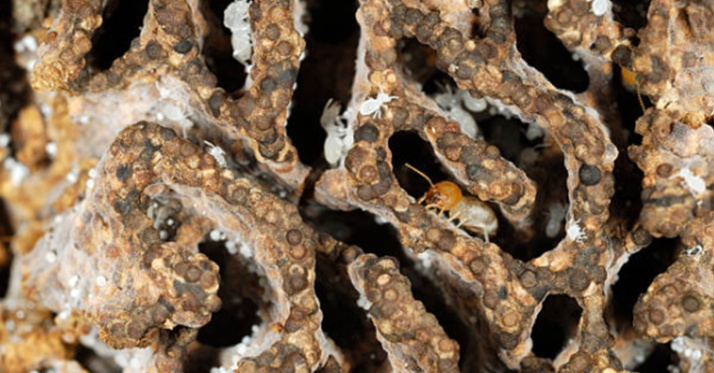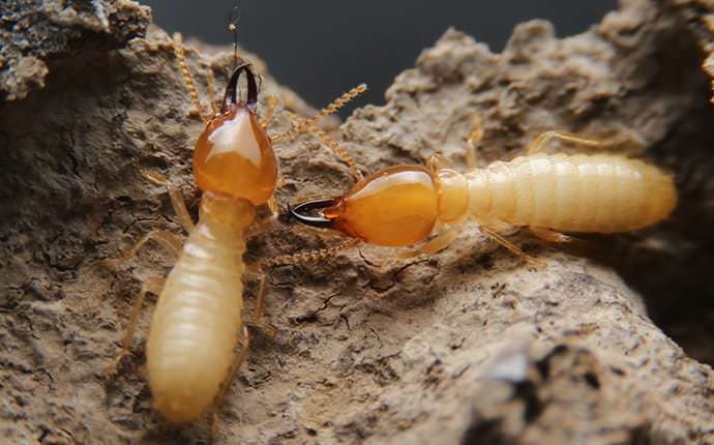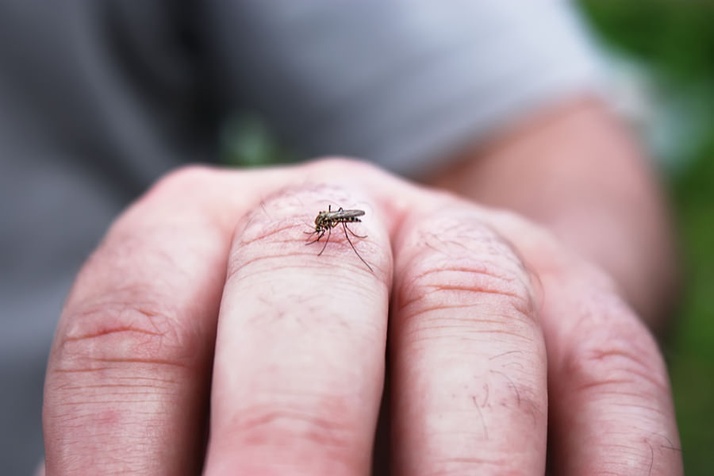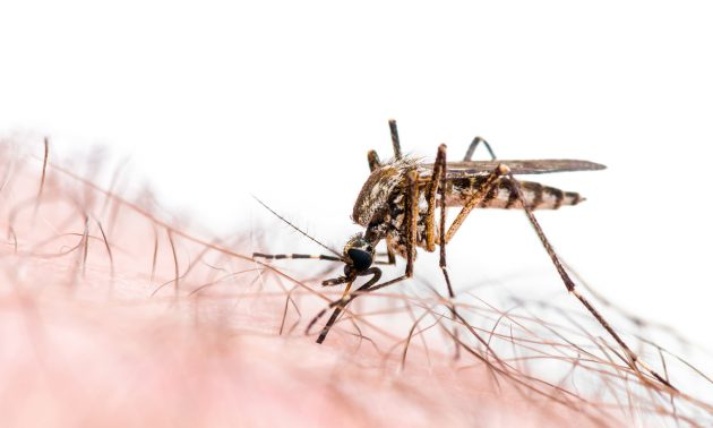How to Tell if You Have a Termite Infestation

Termites are the worst nightmare for many homeowners. It’s unsettling to know that many bugs are lurking around in your home, let alone when you realize that they have the potential to damage prized furniture and household features. In the worst case scenario, termites could even create critical structural damage to the wooden section of your home, creating a possible safety concern. Do you think there might be termites in your home? Read on to learn about four signs of termite infestation and find out.
Visual Examination
There are many tale-tell signs of terminates to be on the lookout for. In some cases, you might discover “tunnels” in wooden items, meaning that termites ate their way through. You might also spot holes, as well as swollen ceilings, doors, and walls as an indicator of a possible termite infestation
Listen for Termite Sounds
In some cases, you could be able to hear rattling sounds generated by termites. When they feel threatened, these insects rattle their heads against tunnels, creating a very distinctive effect. You can also keep listening for clicking noises and rustling sounds, as they go through the wood.
Swarming Near Light Sources
During the day, most termites swarm, to detach from their “group” and finding new areas to colonize. Winged termites, which are common household parasites, are particularly keen to follow electrical light sources, including lamps. You might be able to easily spot them flying around a light bulb during the day, or even at night, depending on the type of termite.
Piles of Wings or Feces
Even if you might not see termites directly, you might be able actually to see what they leave behind. Termites wings and feces might pile up in the corners of your home, behind furniture and in other areas that are not as easy and immediate to access. Always make sure to inspect for these indirect signs of termites.
5 Myths About Termites in New Jersey

How often have you heard of a termite infestation? I’m pretty sure that most people are familiar with the threat of this pest in our area, along with the costly ramifications of not being prepared in advanced by monitoring your home for termites. While most people know about them, we find there's quite a bit of misinformation that exists.
Termite Infestation is Easy to Detect
This is one of the most famous myths you would come across because these infestations are never easy to detect. You can possibly detect them once you start hearing weird sounds from a wooded area of your home, see a swarm, or when you see visible wood shavings and that’s when it may be too late.
Brick Houses are Safe from Termites
Another myth is that brick houses would protect you from a termite infestation. Well, these bugs are capable of crawling through even small spaces in your brick walls.
My property was already treated for termites so I’m OK:
Absolutely not, this is a big red signal for you if you actually believe this. They can resurface anytime, anyplace, and there’s no way to completely prevent it, only monitor it, so be aware and have a monitoring service in place.
Termites are only a problem in the warmer months
This is just another one of those myths where you think it’s all well and good until winter arrives and you open up your home to find termite damage indoors.
DIY Treatment is an Option
Don’t fall for these cheap options, get some expert services to help you out. Trying DIY treatments could only make things worse for you as time passes and the problems persist.
Managing Another Summer With Mosquitos: 10 Ways to Avoid Them

When Noah put two of each animal on the Ark, why did he decide to keep mosquitos? We may never know, but we can handle it.
Mosquitos are more than annoying; they are the world’s number one killer, carrying diseases in every part of the world.
Fortunately, there are ways to deal with these buzzing little pests:
Get rid of standing water
The number one reason there are mosquitos is that there is standing water around. It’s the only place where mosquitos can breed. They must have water to lay their eggs in. When most of us think of standing water, we imagine ponds and big puddles. However, mosquitos will even breed in a plastic cup of water left sitting out. The first thing to do to get rid of mosquitos is to go around your property and look for any standing water. This can be in children’s toys, puddles, water near garages, old trash sitting around, etc. No matter how little water there is, mosquitos will breed in it. Dump it all out.
Make it breezy
Mosquitos are terrible fliers. They can’t handle wind at even 1 mph. If you can, sit in a breezy location. If you can’t do that, then simply put an electric fan blowing toward you and your group. Aim it at the ground. Mosquitos fly low to stay out of the wind, so create wind near the ground and they can’t get to you.
Wear lightly colored, tightly woven fabrics
During the day, mosquitos use sight to find victims. You can stop them by wearing light colors that blend in with the surroundings. Dark colors stand out from the horizon. Also, choose tightly woven cloth, as opposed to looser fabrics. Mosquitos can’t get through a tight fabric, so even if they find you, they have to fight to get to you.
Wear a DEET-based repellant
DEET has a bad reputation, but there isn’t a lot of scientific basis for it. Like everything else, don’t bathe in it and you’ll be fine. Most of us don’t wear insect repellant every day, so we won’t have a problem from the five times in a year we use it. DEET is pretty much the only repellant that has been proven to work against mosquitos and other insects. If you’re hesitant, think of it this way: What’s easy? Using DEET effectively or dealing with West Nile Virus? Use a DEET lotion or wipes, or simply spray it onto your hands and other body parts that will be exposed, like ankles and wrists.
Avoid dawn and dusk on the water
Dawn and dusk are the times when the wind tends to die down. That’s when mosquitos can get out and really do a number on you and your passengers. Avoid these times when the wind is calm or non-existent. If you must be out, be covered, even if it’s warm. The wind tends to come back again once it’s full day or full night.
Don’t scratch
Most people who get sick from mosquito bites in the United States get infections from scratching. Use calamine lotion or an anti-itch cream, but try not scratch. By scratching, you are introducing bacteria into your body by breaking the skin further.
Electronic traps aren’t enough
Even if you have a fancy bug zapper with lights and attractant hormones, it can’t kill all the mosquitos. You still need to take precautions against mosquitos. Many of these traps are effective, but they will never get all the mosquitos.
Citronella candles
This one depends on who you ask. The science is a bit sketchy, but so many people swear by these candles and torches that it seems like they might do something. There is evidence that says citronella candles can deter mosquito bites by 50%, which means you still need to take other precautions, like wearing light colored clothes and tight weaves.
Cut the grass
Long grass creates mosquito condominiums. The little critters will hang onto long grass while waiting for a warm, delicious mammal to run by. If you’ve ever seen a running dog wake up a cloud of mosquitos, it can be disturbing. Keep the grass trimmed and neat, especially around woodpiles and edges.
Clean your gutters
The gutters on your house can be one of the worst culprits for standing water. Get up there and clean them out. Take out leaves and debris so that you don’t have to worry about having a place where mosquitos can breed and terrorize your family.
While there are a few other things you can do, these solutions are among the simplest. Be defensive about mosquitos and they won’t ruin every event you attend outdoors.
Planting a Garden? Check Out these Plants that can Help Control Pests

It’s true; there are plants that can help keep pests at bay. Many people know that marigolds can keep deer out, but there are plants that can keep out everything from ants to rabbits.
These plants have, in many cases, developed natural defenses that keep pests away. Whether it’s their smell, the way that they taste, or a chemical that they create, these plants can help to keep your vegetables and garden intact and less likely to become snacks for visitors.
The most important reason that this information is incredibly useful is that it can significantly reduce the need for pesticides. If a line of flowers or a specific vegetable can keep many pests out, you can avoid needing to put poisons onto your plants and into your environment.
Check out this list on Wikipedia that has a collection of pest repelling plants: https://en.wikipedia.org/wiki/List_of_pest-repelling_plants
Try some of these out and let us know how they work for you. We are always interested in hearing about the experiences of our readers!
How to Avoid Bee Stings

No one wants to get stung by bees. In fact, when a bee flies near you, the initial reaction is to run away. There are a few things you can do to keep bees and wasps at bay.
Don’t smell like a flower
Floral shampoos, perfumes, and body sprays smell like food to bees and wasps. Avoid anything that reminds you of a flower because it reminds them too.
Don’t look like a flower
Those bright colors resembling flowers attract bees and wasps so that they can pollinate the flower. If you’re wearing bright colors, you look like a giant flower. Khaki is the color least likely to get you a stinging audience.
Pack your lunch away
It’s a good idea to stay away from cans of soda or beer in the summer. Buy bottles, especially ones that you can recap. Cover foods and salads completely. Bees are looking for something sweet, but wasps are meat-eaters. All of these bugs simply want the easy meal that you laid out for your family. Cover everything and look for ways to keep the bees and wasps out with screens and wraps.
Watch your step
Wasps live in the ground. If you’re barefoot or wearing flip-flops, you might find that you have stepped on the home of some very angry pests. Wasps are aggressive when they feel threatened, so wearing something that protects your feet might keep you from being in a lot of pain.
"Bee" calm
Swatting and running when you see a bee is a natural response, but it’s also the reason that you might get stung. Try to remain calm and let them do their thing. They won’t sting unless they think they might be harmed. That’s only going to happen it you smack them upside the head. Relax and let them buzz around for a few minutes.
As their food sources begin to disappear, wasps get increasingly aggressive. Late summer and into fall, wasps can become a bit crazy and dangerous. Avoid them if at all possible.
Don’t do it yourself
There are hundreds of bee and wasp killers on the market, but killing them is not a job to take on yourself. A wasps’ nest can be huge underground and invisible to your view. A beehive in a tree can be massive, where you can’t see it. These insects become extremely aggressive when attacked, so they will come after you if they think you are trying to destroy their home. Call a pro, no matter how small you think the job may be. It could save you a lot of pain and even a trip the hospital.
The major key to not getting stung by bees and wasps is to simply leave them alone. If you’re out in the woods, simply steer clear. If they’re near your home, call in a professional to help you with getting rid of them. One or two stings for someone who isn’t allergic is not a big deal, but a hive’s worth of stings can send anyone to the hospital.
Winter Preparation Pest Control Checklist

Winter is here and everyone is heading into the house for warmth and delicious meals, even the bugs and rodents in your area.
Before you settle down for a cup of hot cocoa and a great movie, take the time to secure your house against uninvited squatters that will enter your house to eat your food and generally make everyone uncomfortable.
Outside
- Put chicken wire around your deck, patio, or porch. The chicken wire will prevent rodents from hiding under your porch for the winter.
- Don’t vent your clothes dryer in a hidden space. A dryer vent under your porch, patio, or deck is a warm tunnel for mice and rats to camp out.
- Have the walls treated by a professional for insects. A chemical treatment will keep insects from climbing the walls and getting into your home.
- Put chicken wire onto your downspouts. Rodents will attempt to crawl into them to hide from cold, wind, and snow.
- Keep woodpiles off the ground and away from the house. Woodpiles are a termite and ant superhighway into your house.
- Put your trash into sealed containers, particularly metal ones. Lunch is hard to find under the snow, but not in your garbage cans.
- Install gutters around your house to keep moisture out. Insects, like termites, require moisture to survive and thrive.
Inside
- Don’t leave food out. Even pet food is a great snack for insects and rodents. Leaving it out is like setting out an all-you-can-eat Las Vegas buffet.
- Store everything in plastic containers, including paper and fabric. Anything in your house can be food or a nest for rodents or insects.
- Work with a pro to spray your house and set out traps. A professional exterminator can advise what to do and will help you do it.
- Seal cracks and holes in your walls. Using some simple silicon caulk, you can keep most creatures out of your house.
- Check wires for gnaw marks or missing insulation. Rodents will gnaw on almost everything. Those exposed wires can cause a fire later.
- Replace missing mortar and weatherstripping on your home. Those tiny pathways are ideal for bugs and rodents.
- Look for feces and listen for gnawing sounds. These are the clearest evidence that you have unwanted house guests (no, not your in-laws).
Keeping your house protected and going through this checklist is the best way to have a quiet and happy winter. Now, about those in-laws… you’re on your own there!
Getting a Real Christmas Tree? You May Be Inviting Pests Over For The Holidays!

Your real Christmas tree has beautiful lights and shiny decorations. It might also be transporting some unwanted guests into your home, pests! While few of these insects are harmful, they are very unsightly and, well, gross.
The list of potential hitchhikers includes Praying Mantii, beetles, spiders and aphids. Some of them will stay on the tree. Others will wander around your home.
Here is a brief list of some of the tiny beasts that can enter your home on your fresh Christmas tree:
Praying Mantids
– These fascinating creatures lay eggs on conifers. The eggs will hatch once the tree starts to warm up. These predatory insects will eat all of the bugs on the house, but will also cannibalize each other if there is no more food supply. Many people think that praying mantids are protected, but that’s not true. The best way to deal with them is to remove the light tan frothy egg masses and discard them.
Bark Beetles
– These tiny beetles live on and in trees. They aren’t a threat to furniture or homes, but they can leave a fine sawdust on the floor and make a mess. The beetles tend to stay on the tree and will go back outside when the tree is discarded.
Spiders
– Among the most feared creatures in the world, the spiders that typically hibernate on conifers are harmless. They can be a real surprise in the middle of winter crawling across the floor or up a wall. If they come down from the tree, they will weave small webs in corners. These spiders will often die very quickly inside of the house.
Scale Insects
– These tiny red insects can be seen on your trees as miniscule dots moving around on the branches. When crushed they leave tiny red spots that can be washed off. They are not at all harmful, but they are not welcome friends on Christmas.
Aphids and Mites
– These very familiar little insects that exist everywhere outside. When they come in on a Christmas tree, they can be seen crawling around on the tree and near the packages under the tree. The most annoying part of these insects is when someone finds them crawling over their gift.
A tree shaker, a large device that shakes a tree very hard, can remove most of these insects. It will knock the little visitors off outside where they have a chance to survive. Alternatively you can make sure the tree is shaken out very well before you bring it into your home.
Birds’ nests can often be found in trees, as well. If a tree shaker doesn’t take the birds’ nests out, they should be removed manually. Not only are there many insects that live in birds’ nests, there are parasitic disease in the birds’ feces. Even though they seem cute, they should not be allowed to stay in the house.
One important point: You should not use chemical insect sprays. They are often very flammable and toxic. They should not be used in the house. They can cause a fire and might be toxic to children and animals that play near the tree.
Merry Christmas to all and Happy Holidays from Anchor Pest Control!
Are the Mosquitos getting too friendly? Here are some tips to keep them away from your home.

“If you think you’re too small to make a difference, try sleeping in a room with a mosquito.” - HH Dalai Lama
Mosquitoes are small insects found everywhere in the world except the very extreme North and South Poles. They are flying insects that are often described as the most annoying and dangerous creatures on the planet.
Mosquitoes carry disease. From the West Nile Virus to malaria, most mosquitoes are the most prolific spreaders of disease in the world.
Fortunately, there are some very simple things that you can do reduce the number of mosquitoes in your world. Follow these simple guidelines and your mosquito problems will nearly disappear.
Standing water is the mosquito’s ideal habitat. Mosquitoes lay hundreds of eggs at once in standing water and their gestation period is about 7 days. That means that in about a week after water collects, there will likely be mosquitoes.
Here are some of the most common sources of standing water:
- Bird baths - Keep them clean and change the water at least once a week.
- Old tires - Those old tires on land are mosquito condos. Drain them and throw them away.
- Clogged gutters - Gutters that hold water become little mosquito nurseries.
- Low spots - Low land that holds water can become mosquito ponds. Fill in the land to keep puddles from forming.
- Flower pots - There might be flower pots around without flowers. Flip them over or get rid of them.
- Kids toys - Sometimes the kids will leave toys in the yard for weeks. As soon as water sits in them, so will mosquitos.
If you insist on water features for your tranquil garden, get a fountain. Mosquitoes can’t lay eggs in moving water. Fish ponds are great too. Fish and frogs love the taste of a little mosquito or their larvae.
Bats are the mosquito’s worst enemy. A bat can eat 600 to 1000 mosquitoes an hour. A few bat houses around your property will keep the mosquito population down. Don’t worry about the bats being a nuisance, you don’t look anything like a mosquito in their sonar.
Mosquito spraying with products you can find locally tends to be ineffective. Partially because it is hard to find them in their natural habitat and also because as soon as it rains the pesticide is gone and the mosquitoes are back. And in the summer, rain storms can be extremely frequent.
In reality, the absolute simplest thing you can do is to find the standing water and get rid of the places where mosquitoes populate. If these DIY tips don’t help, contact the Anchor Pest Control Mosquito expert team to come survey your property and help you exterminate them once and for all.
NJ Home Pest Control Tips

Pests and rodents are a nuisance and they can severely affect your health and the health of your family. Bug and insect prevention is critical in protecting homes, businesses, schools and other places where people live, work and play. Make sure you are keeping routine maintenance and never hesitate to call Anchor Pest Control during the early stages of a pest problem.
General tips to take care of your home or business:
Seal cracks and holes on the outside of the home including entry points for utilities and pipes. Metal flashing and caulking can be very helpful for keeping insects and pests out of your house and out of your life.
Keep tree branches and shrubs well-trimmed and away from the house. These types of situations can act as highways for rodents and insects, particularly treeborne bugs. Squirrels and other tree mammals might be a bit too happy to crawl around on your house.
Keep the whole house dry and well-ventilated – Damp basements, attics and crawlspaces attract bugs. The moisture provides water for bugs and the bugs can give rodents something to feed on. While you are keeping it well-ventilated, make sure that it is secure; rodents will hide anywhere they can/
Lock up the trash – Trash and recycle bins need to lock. Trash to you is an all-you-can-eat buffet for rodents and insects. Locking lids, preferable made of metal, will save you a lot of hassle later.
Get rid of the rot – If there are rotting fascia, shingles or siding, it needs to be handled right away. Not only is an easy way for larger pests to get in, but some insects, like ants, wasps and termites love rotted wood
From small things come big problems – Have the mortar and caulking around the basement fixed. Even a small crack can allow in all kinds of bugs and other issues.
Keep the firewood away – Keep firewood at least 25 feet from the house and at least 6 inches off the ground. Rodents and insects use your wood pile the same way that they use wood piles in nature, as food and a place to live. The further from the house that they are, the better.
Don’t suffer in silence – Call a qualified and trained professional to give you advice and help to eliminate pests quickly and safely.
Planning a Vacation? Bed Bug Prevention Tips for Travelers

When you go on vacation, you look forward to coming home with a tan, photographs, memories, and maybe even a few cheesy mementos. You don’t plan on coming home with a new insect infestation, but it happens often enough that it has become an epidemic.
Bed bugs typically don’t cause disease, but an invasion of bed bugs can be nerve-wracking. Waking up each morning with tiny spots of blood on the sheets from bug bites is traumatizing. There are a few things you can do to avoid bringing home unwanted pets when you go on vacation.
Check reviews - Any mention of bedbugs should be taken seriously. If you have no other options, call the hotel and ask about their bedbug status and when the last time was that a thorough inspection was done. If possible, avoid hotels that have had a problem in the last year. Bed bugs are tough to get rid of and many hotels don’t do it well.
Use a hard-side luggage - Less fabric gives bedbugs less places to hide. It will also make it much easier to inspect your luggage before leaving.
Bring a flashlight - You will want to inspect the room before you settle in. Place your luggage in bathroom and check the room. You’re looking for small blood stains, insects that are about half the size of a grain of rice, or feces that look like black pepper. Look on the mattress, especially in the seams. Also, check the headboard, on the floor near furniture, and in closets. Even if a room hasn’t been occupied for months, bedbugs can still be there. They can live for years without food.
A large trash bag - Once you’ve decided that the room is clean, take your luggage out. Keep your clothes up off the ground. For example, keep everything on the dresser top or in the luggage rack. Place your empty luggage into a plastic bag and seal it up. It will make it harder for the bugs to get into your bags.
Don’t use the dresser - Bedbugs love places where they know they can hitch a ride. The dresser in a hotel is an ideal location.
Check your rental car - Be sure to comb over your rental car, including the trunk, very well. Again, bedbugs are travelers and a rental car is as good a place as any to hang out waiting for a ride.
When you get home...
Don’t go straight in - Bring your luggage in through a garage or straight to the laundry room. Empty everything into a washing machine and wash everything in hot water. This will kill any hitchhikers you might have found.
Go over your luggage - Look in the seams and throughout your luggage for bedbugs. They may be lying in wait for you to bring the luggage into the house.
Be vigilant - The key to keeping bedbugs out of your home after a vacation is to remain vigilant. Don’t take anyone’s word for it that there are no bedbugs. Look for yourself. Don’t tolerate any bedbugs in your hotel room and do everything in your power to kill them if they show up in your possessions.










